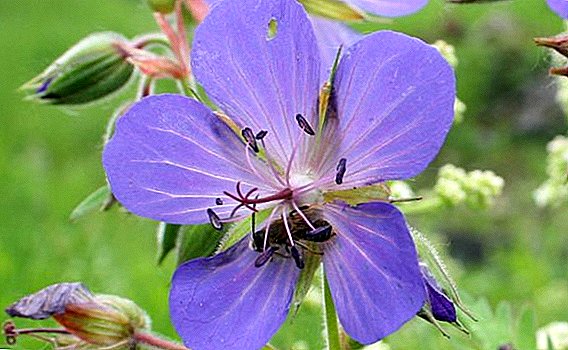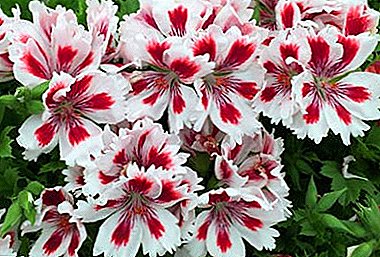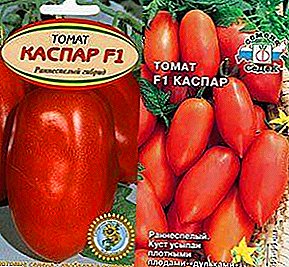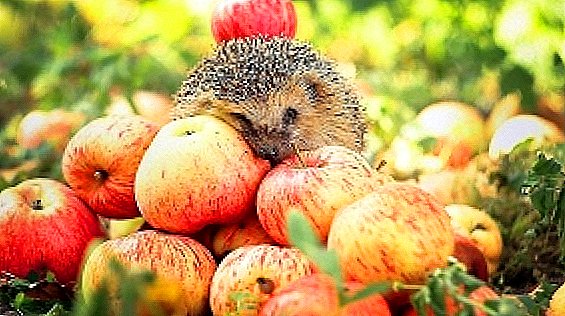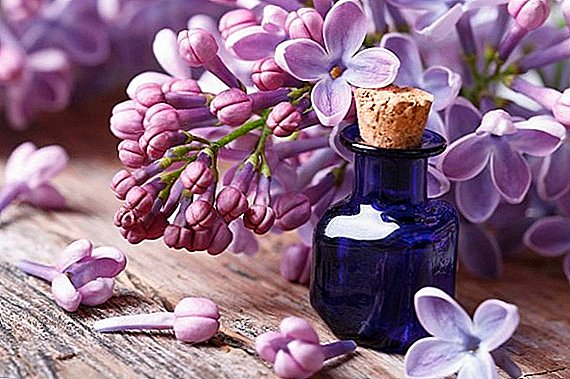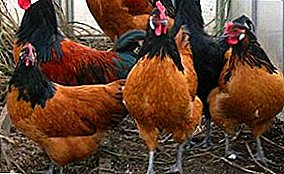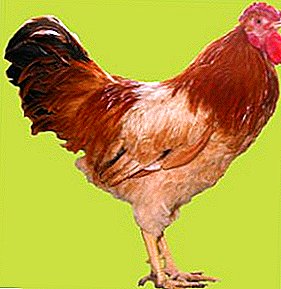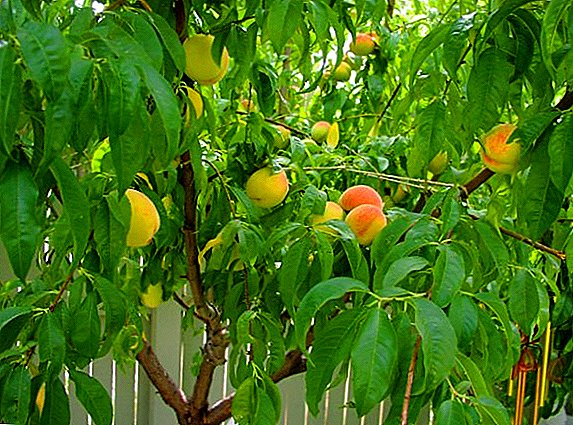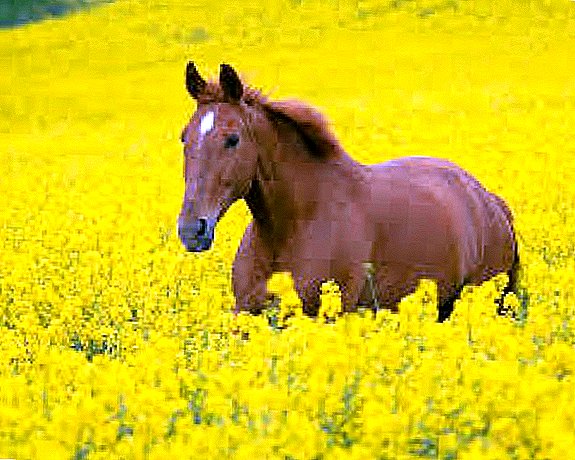 Man's love for horses goes back thousands of years. This animal has always been his first assistant: in labor, in battle and in rest. Now in the world there are more than 400 horse breeds. A special place among them is occupied by riding breeds of horses. The popularity of race horses continues unabated, and each new generation discovers the beauty and grace of a running horse. Moreover, the passion for horses in the world is constantly growing: someone is interested in them just for the soul, someone earns, making bets on horse races, and someone - collects expensive horses.
Man's love for horses goes back thousands of years. This animal has always been his first assistant: in labor, in battle and in rest. Now in the world there are more than 400 horse breeds. A special place among them is occupied by riding breeds of horses. The popularity of race horses continues unabated, and each new generation discovers the beauty and grace of a running horse. Moreover, the passion for horses in the world is constantly growing: someone is interested in them just for the soul, someone earns, making bets on horse races, and someone - collects expensive horses.
Did you know? The most expensive stallion was Shareef Dance (thoroughbred horse breed), which was sold in 1983 for 40 million dollars in the United States.
English racing (thoroughbred horse)

The main reason for the appearance in England of the XVII - XVIII centuries. The breed of English race horses has become a war. Cumbersome knights in armor with heavy spears were replaced by cavalrymen armed with swords and pistols. Instead of powerful horsemen, strong, but agile and fast animals were needed. For the basis for breeding used horses of the royal stables: 50 mares (from Hungary and Spain) and 200 stallions (oriental horses). Three stallions gained particular fame as the ancestors of the new breed:
- Turk Biyerlei (named for the captain who beat a horse from the Turks in the battle for Budapest), he came to England in 1683;
- Darley Arabian (brought in 1704 from Syria) - his descendants played a particularly important role in the breeding of pure breed;
- Godolfin Barb (from Yemen came to Tunisia, was brought to France as a gift to the king, was used there as a water carrier and was bought by Count Gedolfin in 1730), he gave a particularly numerous offspring - in 1850 one of his descendants was present in every English stable.
Did you know? Thoroughbred riding - the fastest race horse breed. No other horse can keep up with them. The absolute record belongs to the stallion named Beach Rekit - 69.69 km / h.The exterior is characterized by such features as: short and powerful body, oval muscular croup, thin bones, elastic thin skin, chest narrowed, perfectly developed “hock” joints, legs are dry and long, with small strong hoofs. The head is dry, with a long nape and large eyes, the neck is straight and thin. Growth can be allowed variations from 1.42 m to 1.72 m. The prevailing suit is red and bay. More rare - black, very rarely - gray.

Purebred riding horses are distinguished from other breeds by large volumes of light and larger heart size. This they owe to the genetic anomaly of Eclipse stallion. Many horse breeders believe that it is precisely because of this that the English racers are invincible in speed.
Purebred horses are distinguished by courage, choleric temperament, speed of reaction. These horses are ready to give all the best, give in to excitement.
Important! Thoroughbred horse rarely participates in show jumping competitions, which is explained by the imbalance inherent in the breed.
Arabian thoroughbred

Arabian riding horse is very recognizable. You should look at it at least once and you will remember it forever. This is one of the ancient race rocks, which appeared in the IV-VII centuries. Among her ancestors are the Akhal-Teke, Parthian and North African horses. The emergence of Islam and the beginning of the Arab conquests accelerated the selection process - not only the Baghdad blade, but also a fast, tireless and hardy horse was necessary for success in battle. The main measure of wealth among the Bedouins was the Arabian racers: the greater their livestock man owned, the higher was his status. In the campaigns, the Arab soldiers took care of their horses more than they did about themselves: they fed them with barley, dates, and kept them in their tents.
In Europe, the Arabian racers were caught during the crusades.

The exterior of the Arabian horses bears the imprint of the Arabian deserts: small height (1.4-1.57 m), medium-sized body, the constitution is dry, the head is small, with large black eyes, the forehead is wide, the bridge of nose is slightly concave, and the nostrils are extended . The neck has a bend, legs are rather long. The tail with a well-developed replica (root) rises arcuately while running (this is one of the distinguishing features). Other features are the presence of only 17 ribs (in other animals there are 18) and a smaller number of caudal vertebrae.
It is also interesting to read about the drugs that are used in veterinary medicine: Enrofloxacin, Nitox Forte, Baytril, Biovit-80, E-selenium, Amprolium, and Nitoks 200.Experts identify three clean lines of the exterior and two mixed:
- Coheilan. It is famous for its strength, good endurance. Great racers. The suit, for the most part, is redhead and bay.
- Siglavi. More pronounced breed properties, lighter, less tall, have an average constitution, less pronounced race qualities. Color predominantly gray.
- Hadban. Least pronounced pedigree traits. Larger in size and sturdier.
- Cohelan-siglavi, siglavi-habdan - combine the features of different types.

The most common gray suit (in different shades, including with "buckwheat" or speckled). More rarely - roan (sabino), bay, white, red. The least common thing is black and silver-bay horses.
Yielding to speed purebred riding racers, This breed has more balanced qualities: for 6-7 days, the animal can overcome 100 or more kilometers of the way, well enduring the heat. Life expectancy is over 30 years. Horses have good health, rarely get sick, give numerous offspring. Temperament is more sanguine, easy to get in touch with, amenable to training and learning.
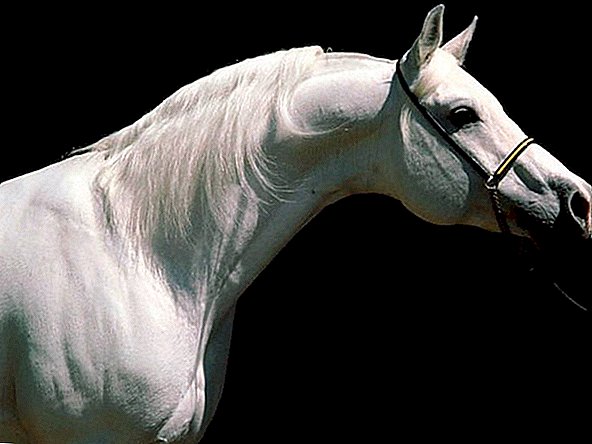
Did you know? The appearance of the Arabian horses Muslim tradition associates with Muhammad. On the way from Mecca to Medina, the Prophet met beautiful mares. Seeing the oasis on the way, all the horses rushed to the water, except for the five best. They gave rise to the Arabian racers.
Although for centuries the main suppliers of Arabian horses were the Arabian Peninsula, Syria, Egypt, Turkey, today their breeding center has moved to Europe, America, Australia. Arab horses today are among the most popular in the world.
The economic value of these horses has decreased. Today, their main use is sports (barrier races, vaulting, jumping), equestrian tourism, festivals and shows, hippotherapy, etc.
Has not lost its relevance since ancient times, practiced selection, because the blood of the Arabian horses can improve the breed of other horses.
Important! Arabian, Akhal-Teke, and Thoroughbred Riding - these are three purebred breeds, bred without the participation of foreign blood.
Akhal-Teke

Akhal-Teke or Akhalteke - Eastern riding horse which appeared in the 3 millennium BC in Central Asia in the Ahal oasis. These animals were bred in the Parthian kingdom, in Persia. Many commanders appreciated the high qualities of the Akhal-Teke horses, but they managed to preserve the purity of the breed only in Turkmenistan - nomadic horses literally idolized. The owner shared with the horse bread and shelter.
Did you know? Marco Polo testified that Alexander Macedon’s favorite horse, Bucephalus, was Akhal-Teke. The commander founded and named the city in his honor (now it is the city of Jalalpur in Pakistan).

Exterior Akhal-Teke historically formed in the hot desert. The horses of this breed are lean, rather tall (from 1.55 to 1.63 m). Their back and legs are long, the croup is slightly lowered. The head is a small, elegant form with almond-shaped eyes. Ears - moving and long. The profile of the head is slightly hooked. The neck is long and thin. The hooves are small. Distinctive features include:
- rare mane and tail (mane may be absent altogether);
- thin skin (blood vessels are translucent);
- the hairline has a satin sheen ("golden ebb");

- special gaits (developed in the conditions of sand dunes). Step, trot and canter have a high amplitude, movements are made smoothly.
The character of Akhal-tekins is ardent, the temperament is choleric. Horses are very touchy, proud and independent.
Important! Akhal-Teke requires a special approach to themselves, constant contact with the owner: they are strongly attached to a specific person (like dogs), do not converge well with other people and do not tolerate a change of owner (they are often called the horses of the same owner).
 Akhal-Teke horses are used for riding, in sports competitions (horse racing, distance runs), in falconry. The best form is found by 4-6 years. Perfectly tolerate heat, hardy.
Akhal-Teke horses are used for riding, in sports competitions (horse racing, distance runs), in falconry. The best form is found by 4-6 years. Perfectly tolerate heat, hardy.The largest populations of Akhal-Teke horses are in Turkmenistan, Russia, Europe and the USA.
Budennovskaya

The official date of birth of this breed is 11/15/1948. On this day a special decree of the Council of Ministers of the USSR was issued on the recognition of the breed, named after Budenny. The beginning of the selection was laid in the 1920s, under the supervision of Marshal of the cavalry S. Budenny. It was necessary to create special "army" horses. The mares of the Don breed of horses bred in Russia and purebred stallions were taken as a basis. When the need for army horses disappeared, these horses with good race qualities began to be actively used in sports competitions (racing, triathlon, jumping, etc.).
The exterior of Budennovsky horses provides for an increase from 1.6 to 1.8 m and may have three options for body structure:
- massive (with a strong constitution, developed muscles and bones);

- characteristic (combined massiveness and dryness, animals are more playful);
- Eastern (dry constitution, more rounded decorative forms, animals have good endurance, but more demanding and capricious).

Color is characterized by a predominance of shades of red (with a golden sheen).
The head is dry, has a straight profile, is proportional. Back and croup - long, powerful. Strongly developed hock joints.
Proper feeding of horses is the most important factor; their diet should include: corn, rzhu, sorghum, fescue, barley, wheat and hay.
The main breed qualities: performance, strength, endurance, excellent race data, beauty.The main breeding centers are located in the Rostov region of the Russian Federation - Tselina stud farms (formerly Yulovsky), First Cavalry Army and them. Budyonny.
Hanover

Hanover breed bred in Germany (Lower Saxony). The first mention of it occurs in the VIII century. (Poitiers Carl Martell stopped the invasion of the Arabs). The horses were famous for their power and strength (they wore armor and knights in armor). Kurfüst of Saxony George I in the XVIIIth century delivered for the refreshment of the blood of horses from Spain, England, the Arabian horses. After the Napoleonic wars, a new stage in the improvement of the Hanoverians began - the interbreeding with race breeds (thoroughbred horse, trakehner, Arab). Finally, the Hanoverian breed was formed in the mid-twentieth century. These horses with medium agility, strong jump and great strength are ideally suited for sports competitions (jumping, triathlon, dressage).

The modern representatives of the Hannover breed look very much like purebred riding horses, but differ in height (up to 1.7 m), well developed body and rump muscles, and a longer neck. The head is of medium size. The color is the most diverse, mostly monochrome, but often white spots are found.
Horses of Hanover different balanced character, persistent.
Breeding work includes a one-day test for stallions (temperament, performance, jump accuracy and other qualities are assessed).
Don

The Don breed was bred during the XVIII-XIX centuries on the Don by local Cossacks. Don horses were ideal for both farming and war. In the selection used trophy horses (Karabakh, Persian, Arab), which the soldiers led from the campaigns. In 1910, the Don horses were declared the property of Russia.
Don horse is inferior in agility to other race breeds (Akhal-teke, English, etc.), but in endurance and simplicity she has no equal (per day can go from 100 to 300 km).
Did you know? During the war, the British with the drills (1898-1902) in South Africa, all the English horses fell, while the Don horses (200) of General French survived and served.
During the civil war, this breed almost disappeared, and its revival took place in the 1920s and 30s of the last century.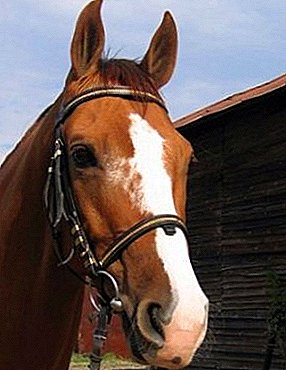 The exterior is characterized by massiveness and power of a long hull, tall (up to 1.7 m). The head is medium in size, eyes wide apart. Long neck arcs. Chest and croup - wide, strong, and long legs have wide hooves. The constitution is strong. The color is dominated by red (with a golden sheen). Character calm.
The exterior is characterized by massiveness and power of a long hull, tall (up to 1.7 m). The head is medium in size, eyes wide apart. Long neck arcs. Chest and croup - wide, strong, and long legs have wide hooves. The constitution is strong. The color is dominated by red (with a golden sheen). Character calm.Today, these horses are used in agriculture, in horse-riding training, in sporting events.
Kabardian
Kabardian breed was formed more than 300 years ago in the North Caucasus. For its breeding, local steppe horses were used, as well as Arabian, Karabakh and Persian horses, and Akhaltekins. All year horses grazed herds. In the summer - in the mountains (on the Alpine meadows), wintered in the foothills. This breed feels equally confident on mountain paths and wide steppes, under a horseman or in a harness.

Medium height - from 1.47 to 1.59 m. The exterior is characterized by the following features: the small head has a hook-nosed profile, the constitution is strong: short straight back, chest is wide, dry legs with strong hoofs in the shape of an inverted cup. The predominant color is dark. The mane and tail are very thick.
Inside the Kabardian racers, the main, eastern and massive types are distinguished.
Temperament is lively, horses quickly get used to people, perfectly obey.

This hardy horse is perfectly adapted to ascending and descending in the conditions of high mountains, for movement on stony surfaces. During the day it can travel up to 100 km and carry 150 kg of cargo.
Such animals very rarely get sick, have good health and fertility.
The popularity of Kabardian horses grows: in France, in Bavaria, in the USA and other countries, the Association of Kabardian horse lovers operates.
Important! "Warm-blooded" in foreign hippology called half-blooded breeds, which were bred by the infusion of "pure" blood of thoroughbred horses. In the future, they need a constant (not less than 4-5 generations), a surge of pure blood. "Cold-blooded" are local breeds of horses that have not experienced the effects of pure blood.
Terskaya

At the origin of the Terek breed was another, bred in the Luhansk region in the 19th century - Streletskaya. But during the civil war, livestock losses were so great that this breed was no longer subject to recovery.
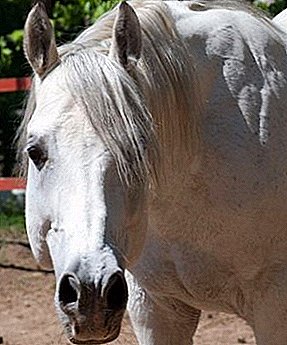 In 1925, breeding work began with surviving specimens of the Streltsy breed (including the Cylinder, the horse of Admiral Wrangel, captured in the Crimea), Don, Arab and Kabardian horses. In 1948, the Terek plant recorded the emergence of a new breed - Terek.
In 1925, breeding work began with surviving specimens of the Streltsy breed (including the Cylinder, the horse of Admiral Wrangel, captured in the Crimea), Don, Arab and Kabardian horses. In 1948, the Terek plant recorded the emergence of a new breed - Terek.The exterior is in many ways similar to the Arabian horses: the growth is slightly below average (from 1.5 to 1.53 m), the constitution is muscular, and dry. The back and croup are wide, the legs are strong. The average dry head has a slightly concave profile and slightly protruding ears. The mane is thick and soft.
Three types of these horses are distinguished:
- characteristic;
- lightweight (riding, drier limbs);
- thick (larger size).

The temper is peaceful, balanced. Horses are amenable to training, hardy, have good health, are characterized by longevity and fecundity.
Most of the Terek horses are bred at the Stavropol stud.
Trakenenskaya

Trakehner horse appeared in Prussia, he refers to the so-called. warm-blooded horses. The Teutonic Knights began to breed this breed (they were granted land here and they brought Eastern stallions from Palestine). The birth of the breed took place in 1732, when the Royal Trakehner horse farm was opened in Prussia and more than a thousand Arab, English and Danish horses were purchased. The goal was one - to create a universal horse for the army and nobility.
In the twentieth century, priorities in breeding Trakene horses have changed - they are beginning to breed as a sports breed. Ippology breeders, adding to the blood of horses of the Trakenensky breed, the blood of the best horse breeds for riding, were able to create such a horse, which became famous in many international competitions.
Did you know? At the 1936 Olympiad, the Trakehner horses brought the German team all the gold awards in equestrian sports.

In 1945, all the trakenen horses were taken to the stud farm. Kirov on the Don. Из-за перемены климата, неграмотного содержания, болезней многие кони погибли. Восстановили породу лишь к 1974 г. ("русский тракен").
Рост составляет до 1,68 м. The main signs are a powerful body, oval croup, strong legs with well-developed joints and powerful wide hoofs. Dry broad head has a straight profile of perfect shape.

Possess high endurance (often used in triathlon, racing crews), courage. Not afraid of harsh sounds and shots.
It also distinguishes these animals with a rhythm in all paces, a wide and easy step.
The prevailing suits are red, black and black.

Ukrainian horse
This is one of the youngest breeds of riding horses, which appeared in 1990. This was preceded by a lengthy selection process, which began after World War II: several stud farms (Alexandria, Dnepropetrovsk, Derkulsky, Yagolnitsky, etc.), on the initiative of S. Budyonny, brought trophy horses from Hungary (Mezohediesh factory), as well as Hannover, Traken and others (altogether 11 breeds were involved).
 The exterior combines the best features of the original rocks: tall (up to 1.68 m), strength of the constitution and bones, dryness, harmonious constitution, wide back, chest and croup.
The exterior combines the best features of the original rocks: tall (up to 1.68 m), strength of the constitution and bones, dryness, harmonious constitution, wide back, chest and croup.
Horses of Ukrainian riding breed differ lively temperament, energy, balance. They are frisky and mobile, have high sporting qualities.












 The exterior is characterized by massiveness and power of a long hull, tall (up to 1.7 m). The head is medium in size, eyes wide apart. Long neck arcs. Chest and croup - wide, strong, and long legs have wide hooves. The constitution is strong. The color is dominated by red (with a golden sheen). Character calm.
The exterior is characterized by massiveness and power of a long hull, tall (up to 1.7 m). The head is medium in size, eyes wide apart. Long neck arcs. Chest and croup - wide, strong, and long legs have wide hooves. The constitution is strong. The color is dominated by red (with a golden sheen). Character calm.


 In 1925, breeding work began with surviving specimens of the Streltsy breed (including the Cylinder, the horse of Admiral Wrangel, captured in the Crimea), Don, Arab and Kabardian horses. In 1948, the Terek plant recorded the emergence of a new breed - Terek.
In 1925, breeding work began with surviving specimens of the Streltsy breed (including the Cylinder, the horse of Admiral Wrangel, captured in the Crimea), Don, Arab and Kabardian horses. In 1948, the Terek plant recorded the emergence of a new breed - Terek.
